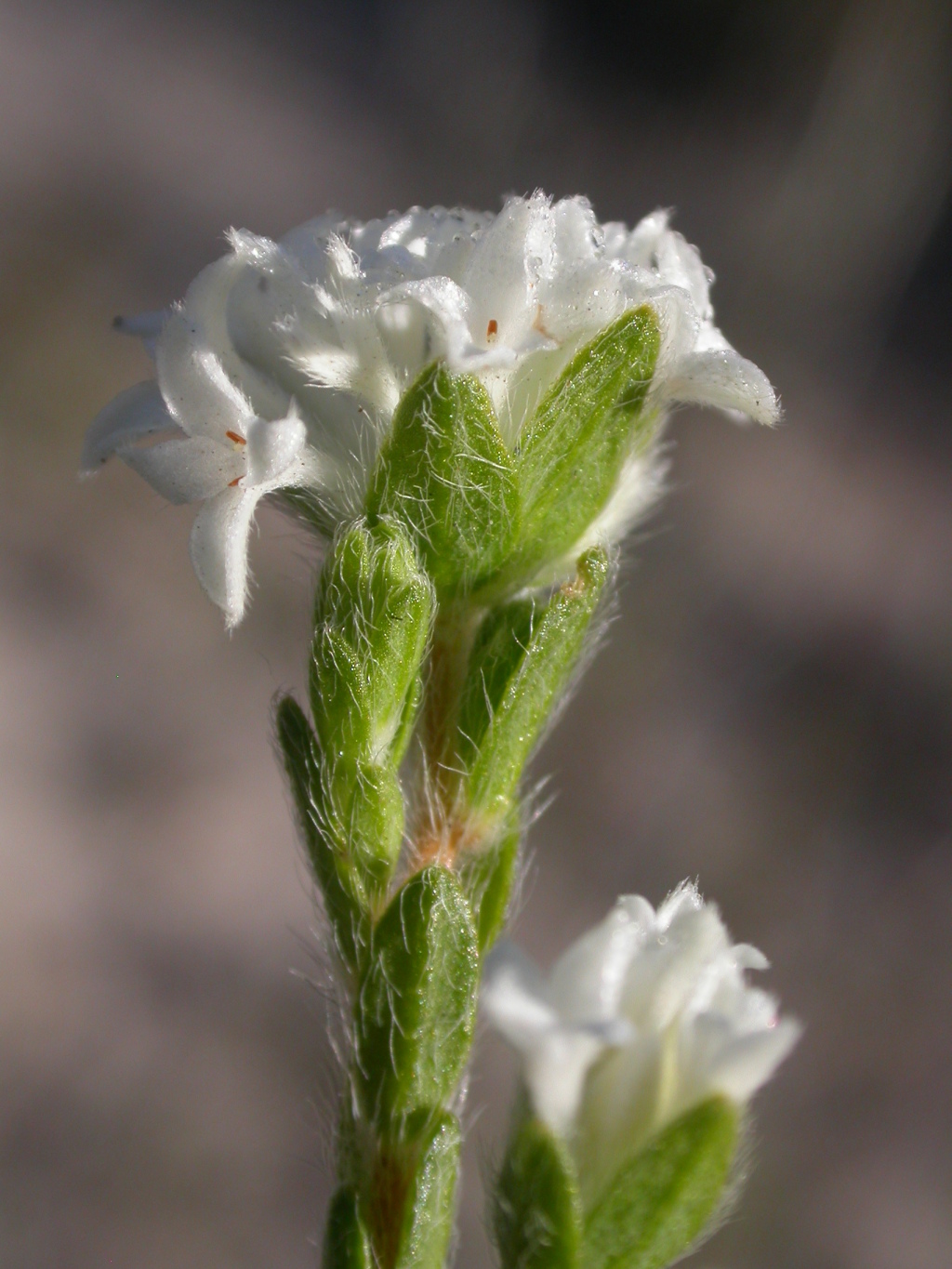Pimelea phylicoides
Meisn. Heath Rice-flowerShrub usually 20–50 cm high; young stems densely hairy; nodes prominent. Leaves alternate or opposite, shortly petiolate, narrowly ovate to elliptic, 3–8 mm long, 1–3 mm wide, concolorous, medium to dark bluish-green, with scattered to moderately dense covering of fine white hairs on undersurface, glabrous above; margins minutely irregular to almost toothed. Inflorescence terminal, a 3–18-flowered head; receptacle well-developed; involucral bracts 3–6, sessile, ovate, 3–9 mm long, 1–4 mm wide, hairy outside, glabrous inside, persistent. Flowers bisexual, densely hairy outside, white; floral tube 5–8 mm long, ovary-portion with longer hairs than above, style-portion longer than ovary-portion, sparsely hairy inside, circumscissile above ovary; sepals spreading, 2–4 mm long, glabrous inside; pedicel hairy; stamens shorter than sepals; anthers opening towards centre of flower; style exserted. Fruit dry, enclosed. Flowers Jun.–Feb.
LoM, Wim, GleP, VVP, VRiv, GipP, OtP, Gold, CVU, GGr, DunT, WPro, HSF. Also SA, Tas. (King Is.). Scattered from western Victoria to Port Phillip Bay and Westernport (and nearby mountains), with an isolated population on Wilsons Promontory. Usually growing on sandy soil.
Entwisle, T.J. (1996). Thymelaeaceae. In: Walsh, N.G.; Entwisle, T.J., Flora of Victoria Vol. 3, Dicotyledons Winteraceae to Myrtaceae, pp. 912–930. Inkata Press, Melbourne.
 Spinning
Spinning

